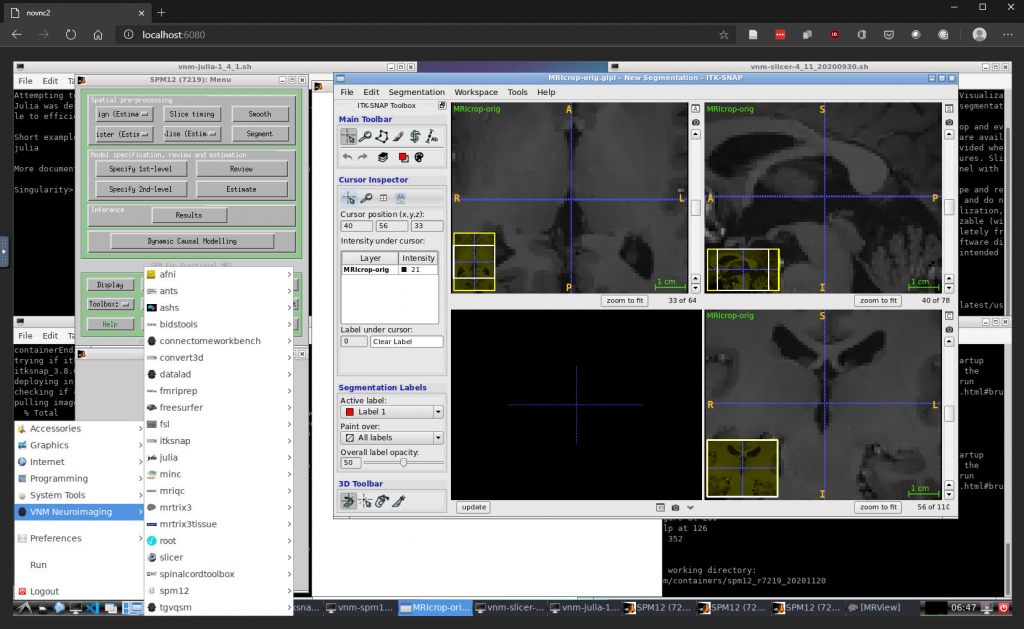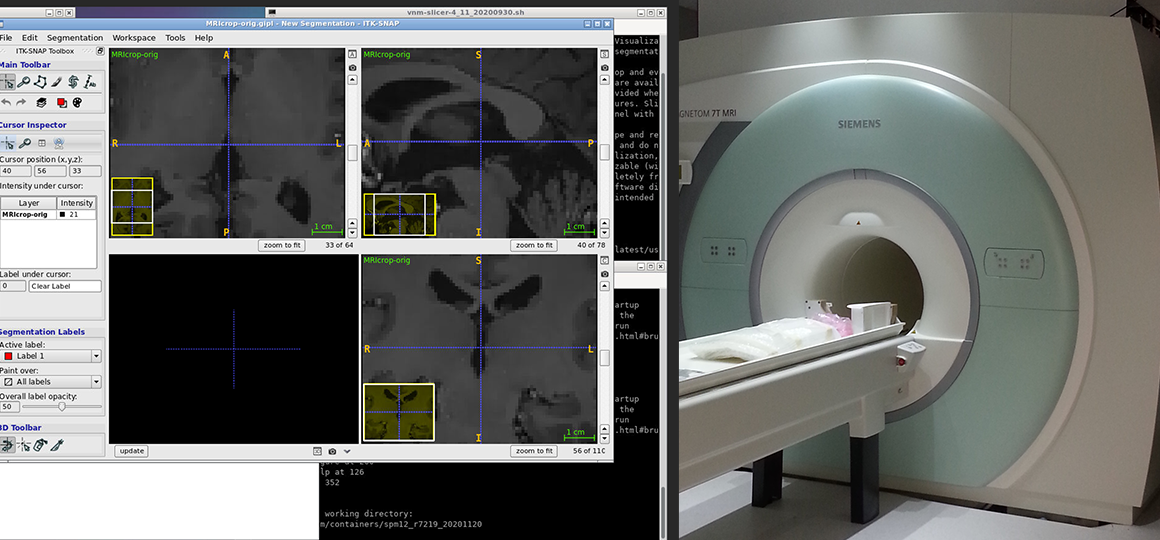Virtual tools for MRI analyses
Mr Shane Ehrhardt, PhD candidate in the School of Psychology at the University of Queensland, wants to know: Do training benefits accrued from one task affect cognitive performance on separate, untrained tasks?
Working with Prof Paul Dux, Dr Hannah Filmer and Prof Jason Mattingley, Mr Ehrhardt is combining multiple methods, such as brain stimulation and MRI, to tease apart the neural substrates underlying cognitive training gains. Specifically, he’s looking at how the brain changes with training – what regions, processes, and cortical structures underpin performance, and how brain stimulation may modulate and interact with those neural substrates.
Virtual laboratories helping to understand brain training and multitasking
Understanding the brain is a complex undertaking. To quantify performance changes, Mr Ehrhardt is analysing data captured on the QLD NIF Node flagship ultra-high field MRI infrastructure.
To accurately quantify and analyse MRI data, it needs to be processed by specific algorithms to ensure its quality and reproducibility. As we collect large quantities of data, being able use high performance computing systems and analysis environments is necessary to keep the time scales feasible for our research.
Mr Shane Ehrhardt
Previously, this type of analysis was carried out by jumping through technical hoops to access special hardware or using limited capacity local hard drives. Hence, (then) NIF Facility Fellow Dr Steffen Bollmann introduced Mr Ehrhardt to the Australian Research Data Commons (ARDC) co-funded Characterisation Virtual Laboratory (CVL)and developed multiple software containers with the required neuroimaging software packages (https://github.com/NeuroDesk/neurodesk).

The CVL is a free, cloud-based virtual desktop workbench that makes translating complex imaging data into accessible information, simply and quickly. It gives researchers access to timely data, allowing them to run and modify experiments and other research activities in real time.
Using the CVL, I can interactively try out commands in the terminal and then visualise the outputs. Submitting final pipelines via qsub to run on the cluster also works well.
Mr Shane Ehrhardt
Mr Ehrhardt now uses the CVL to process MRI data, create quantitative susceptibility maps, and analyse resting-state fMRI data. The CVL allows him to access tools such as nipype, Freesurfer, and fMRIprep, utilising a high-performance computing connection from the convenience of his own browser. These NCRIS-enabled tools are enabling cognitive neuroscience research, allowing researchers such as Mr Ehrhardt to investigate brain training and multitasking.
This story was contributed by the QLD Node of NIF.



